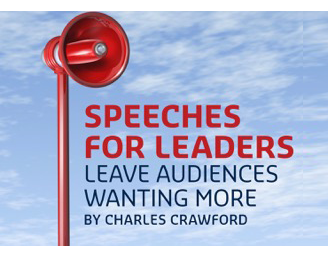I am still in deepest Warsaw, poised to give Polish officials training tomorrow and Tuesday in Speechwriting.
On Thursday I swung by TEDxWarsaw, having given some speech-coaching to several participants the night before.
One of the points I made was that a presentation at an event like TEDx is not a lecture. The trick of a fine speech is to have a conversation with the audience, even though you are the only one doing the talking.
Easier said than done, of course. Because to do that well a speaker has to engage as many people as possible on many different levels simultaneously: eyes, ears, mind, mood, instinct.
And there’s no time to lose! Within literally a few seconds the audience are going to be unconsciously saying to themselves one of two things:
- this one sounds quite interesting. I’ll listen
- I’ll pass on this – where’s my Blackberry?
So it’s vital to get off to a strong start, preferably one with high emotional and visual content to catch the audience’s immediate attention.
Perhaps producing an unexpected or interesting object which symbolises the message you are about to give. Or by using some strong, dramatic words – then pausing to let them sink in.
As I said in the coaching sessions, you need to be yourself. But you need to draw on that part of yourself which puts on a bit of a show.
On a separate training exercise this week, all the course participants were given some 15 minutes to make a presentation about their work. But we ran behind, so I asked them to make the presentation in ten minutes instead.
The first person did a brisk job, squeezing everything in by talking faster but still more or less clearly.
I asked him why he had accelerated his delivery.
"I had to speak faster, because I had less time!"
"But if you have less time, perhaps it’s better to speak slower? To choose your words with greater care, to focus on what precisely you want to say and how you say it?"
This exchange and watching different TEDxWarsaw presentations brought home once again the importance of MSS in public speaking:
What you want to say: MESSAGE
How you say it: STRUCTURE + STORY
Too many TEDxWarsaw speakers were not really clear on what they really wanted to say and convey, concentrating instead on filling up their allotted time.
Two concluding scientific presentations in particular were little more than rebooted university lectures, complete with incomprehensible slides and diagrams. Interesting enough in a technical way if you liked that sort of thing, but quite lacking in emotional engagement and failing to draw wider lessons – in other words, failing to bring the audience to move from Knowledge to Wisdom.
Conclusion?
Simple. If you don’t have a clear message and convey it clearly and well when giving a speech or making a private presentation to key clients, the message received by the audience is loud and clear:
This person doesn’t have a clear message – and I’m wasting my time listening










